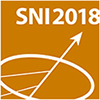Speaker
Description
Understanding the physical properties of systems which are simultaneously subject to strong spin-orbit coupling (SOC) and electron correlations is an en vogue research area and triggered intensive studies e.g. by neutron and x-ray spectroscopy methods. These studies revealed novel electronic and magnetic phases in 4d and 5d materials. At one level, SOC introduces another competing energy scale, producing unexpected electronic states. This is the case for the so-called spin-orbit Mott insulator in iridate perovksites which would be expected to be metallic in the absence of SOC. At another, more profound level, the SOC fully entangles spin and orbital degrees of freedom such that the magnetic interactions acquire an anisotropic, bond-directional nature - the Kitaev interaction - augmenting the conventional isotropic Heisenberg term in 3d systems. Nuclear Resonant Scattering (NRS) is sensitive to electronic and magnetic properties with an enhanced sensitivity to the direction of magnetic moments compared to other methods. In addition, the case of the 73 keV transition in iridium has the advantage that the penetration depth and the focusing options allows for studies at high pressure induced metal insulator transitions and small sample volumina in general. We present first NRS studies at the 193Ir transition and studies on iridates with an emphasize on the magnetic structure in the strontium iridate Sr2IrO4 where an out of plane component of the magnetic moment has been observed. To perform the experiments the development of a new monochromator for 73 keV and an efficient fast multi-element Avalanche Photodiode Detector have been essential [1].
References
[1] https://arxiv.org/abs/1804.06708s

